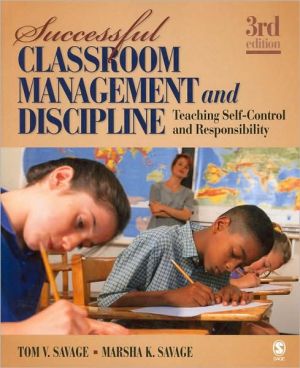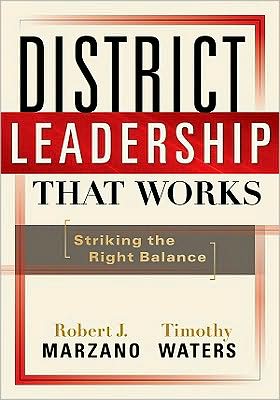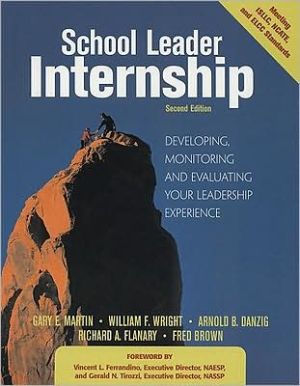Successful Classroom Management and Discipline: Teaching Self-Control and Responsibility
Focusing on how educators can facilitate the development of self-control and responsibility in students, Successful Classroom Management and Discipline offers comprehensive yet concise coverage of the preventative aspects of classroom management, as well as a wide range of effective intervention strategies. In this Third Edition, authors Tom Savage and Martha K. Savage offer new and updated coverage of teacher stress, legal dimensions of management and discipline, teacher/family...
Search in google:
Focusing on educator facilitation of the development of self-control and responsibility in students, Successful Classroom Management and Discipline offers comprehensive yet concise coverage of the preventative aspects of classroom management, as well as a wide range of effective intervention strategies. In this Third Edition, authors Tom V. Savage and Marsha K. Savage offer new and updated information about teacher stress, legal dimensions of management and discipline, teacher/family collaboration, and bullying.
Preface xiAcknowledgments xiii1 Managing the Contemporary Classroom 1Classroom Scenario 1Defining Management and Discipline 5Management 6Discipline 8Achieving the Goal of Improved Self-Control 8Basic Principles 10Teachers and Stress 14Review of Main Ideas 15Application and Enrichment 162 Learning to Be an Effective Classroom Manager 19Classroom Scenario 19What Is Leadership? 22Establishing Leadership in the Classroom 23Legitimate Power and Authority 24Reward Power and Authority 26Coercive Power and Authority 27Expert Power and Authority 28Referent Power and Authority 29Teacher Consistency 31Sharing Power and Responsibility 32Involving Students in Classroom Management 32Sharing Power in the Establishment of Classroom Rules 33Review of Main Ideas 39Application and Enrichment 403 Classroom Behavior and Motivation: The Essential Link 43Classroom Scenario 43The Link Between Motivation and Student Behavior 46Some Basic Principles of Motivation 46Increase the Value of Learning Goals 49Link Learning to Student Needs and Interests 50Applying a Basic Model of Motivation 58Relate the Content to Student Needs and Interests 58Alter Perceptions of Required Effort 59Increase the Probability of Success 60Review of Main Ideas 62Application and Enrichment 634 Managing the Learning Environment 65Classroom Scenario 65Dimensions of the Physical Environment 67The Spatial Dimension 67Behavioral Settings 67The Classroom Ambiance 77Softening the Environment 78Background Music 79Managing Classroom Time 80Defining Classroom Time 80Establishing Classroom Routines82Teaching the Routines 85Providing Assistance to Students 87Managing Transitions 88Review of Main Ideas 88Application and Enrichment 895 Managing Instruction 91Classroom Scenario 91The Dimensions of Lesson Management 93Clear Objectives 93Teacher Clarity 94Giving Clear Directions 95Withitness 96Whole-Class Instruction 97Lesson Momentum 97Lesson Pacing 98Overlapping 100Lesson Smoothness 101Group Focus 103Cooperative Learning and Group Activities 106The Role of the Instructional Manager 107Managing Inclusive Classrooms 110Technology and Management 112Noninstructional Use 115Responding to Incidents of Misbehavior 116Review of Main Ideas 117Application and Enrichment 1186 When Misbehavior Occurs 121Classroom Scenario 121Teacher Attitudes and Motives 122Teacher Attitudes 123Teacher Motives 124The Purpose of Discipline 128Basic Principles to Consider When Choosing a Response 130Preserve the Dignity of Students When Responding to Their Behavior 130Private Correction Is Preferable to Public Correction 131Respond to Incidents of Misbehavior Consistently and Fairly 132Identify the Causes of Misbehavior 133Choosing a Response to Misbehavior 134Choosing a Personal Response 134Developing a Range of Alternative Responses 142Low-Profile Approaches That Support Self-Control 142More-Intrusive Teacher Intervention 143Responses for Serious and Persistent Misbehavior 144Review of Main Ideas 144Application and Enrichment 1457 When Problems Are Minor 147Classroom Scenario 147Developing a Supportive Community 149Communication in a Supportive Classroom 151When Misbehavior Occurs 154Consequences and Punishment 155Reinforce Appropriate Behavior 156Choose a Thoughtful Response 156Low-Profile Responses 157Nonverbal Responses 159Remove Distractions in an Unobtrusive Manner 161Wait for Compliance 162Low-Profile Verbal Responses 162Review of Main Ideas 165Application and Enrichment 1668 Responding to Persistent Misbehavior 169Classroom Scenario 169A Range of Responses for Persistent Behavior Problems 172Focusing Responsibility for the Problem 172Responding With Clarity and Firmness 175Limit Setting 176Preferred Activity Time 178Cost-Benefit Analysis 179Time-Out 180Rearrange the Environment 181Teacher-Student Conference 182Behavioral Problem Solving 183Behavioral Improvement Agreements 185Teaching Students to Modify Their Own Behavior 186Parent Conferences 187Detention 189Involving Others 191Review of Main Ideas 192Application and Enrichment 1939 Violence and Serious Misbehavior 195Classroom Scenario 195School Violence 197Violence Against Students 201Violence Against Teachers 206Truancy and Attendance Problems 208Causes of Truancy and Attendance Problems 209Academic Dishonesty 212Identifying Causes of Academic Dishonesty 213Approaches to Solving Academic Dishonesty 213Vandalism 214Identifying Causes of Vandalism 215Approaches to Solving Vandalism Problems 215Substance Abuse 216Identifying Causes of Substance Abuse 217Approaches to Solving Problems of Substance Abuse 217Review of Main Ideas 219Application and Enrichment 22010 Bullies and Bullying 223Classroom Scenario 223Defining Bullying 226Characteristics of Bullies 228Prevention and Response 230School-Level Programs 230Classroom-Level Programs 231Assisting Victims of Bullying 235Review of Main Ideas 238Application and Enrichment 24011 Conflict Resolution 243Classroom Scenario 243Understanding Conflict 246Responses to Conflict 247Passive Approaches 249Assertive Responses 251Facilitative Responses 253Responding to Controversy 257Solving Conflicts With Negotiation, Mediation, and Arbitration 260Negotiation 260Mediation 262Arbitration 264Review of Main Ideas 265Application and Enrichment 26612 Legal Dimensions of Classroom Management and Discipline 267Classroom Scenario 267Teacher Liability Protection Act of 2001 270Understanding Teacher Rights and Responsibilities 271Establishing Reasonable Rules 273Use of Force in Discipline 274Negligence 274Understanding Student Rights 276Search and Seizure 278Freedom of Expression 280Dress Codes 281Harassment 282Freedom of Conscience 283Students With Disabilities 283Review of Main Ideas 284Application and Enrichment 285Index 287About the Authors 297








